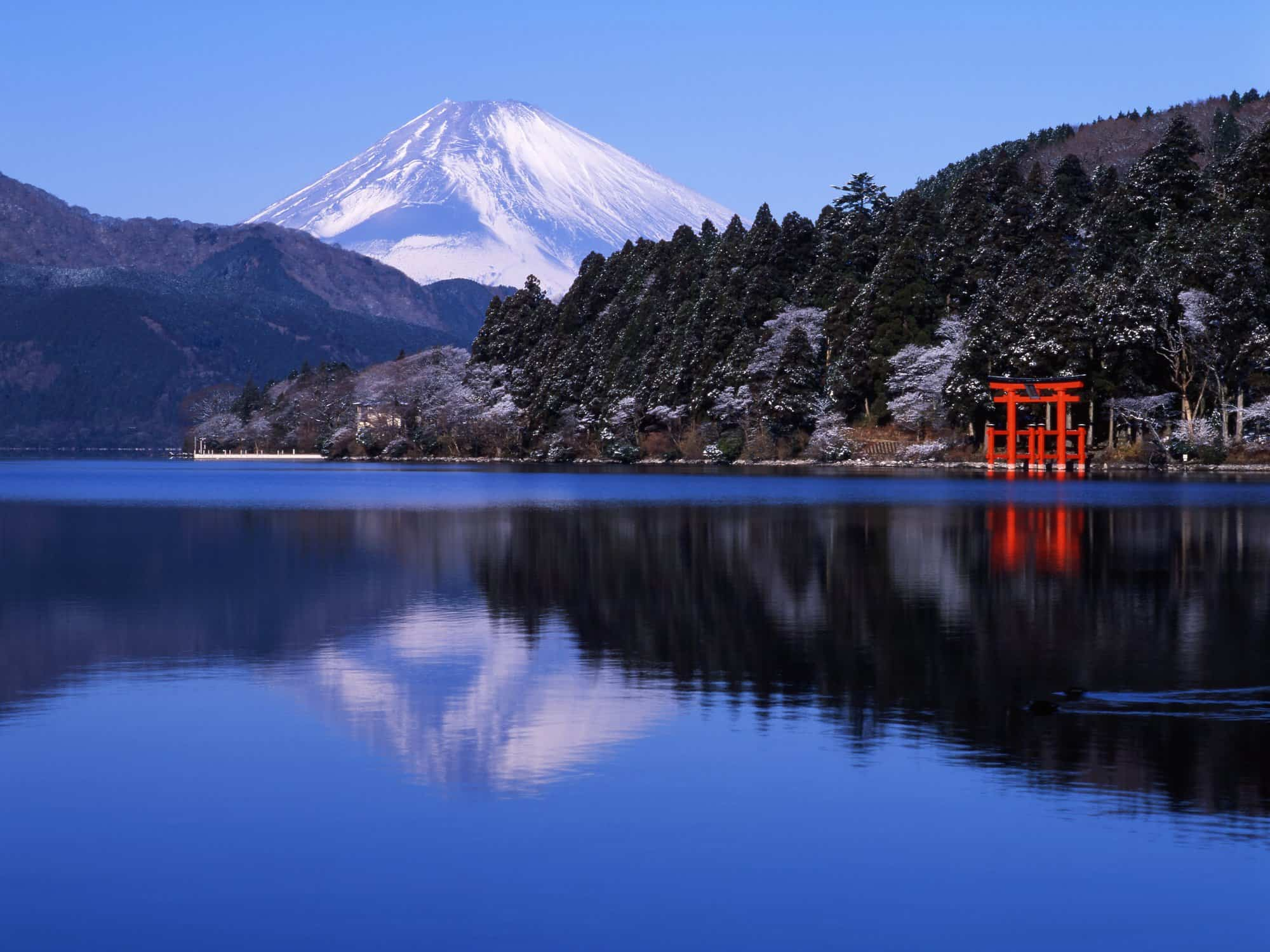


Hakone Shrine
The iconic red 'Gate of Peace' that stands serenely on the waters of Lake Ashi.
A picturesque shrine nestled in a dense forest on the shore of Lake Ashi, known for its stunning torii gate in the water which perfectly frames Mt. Fuji on a clear day.
History of the Shrine
Hakone Shrine's history dates back to 757 AD when a revered priest, Mangan, established a shrine here following a divine message he received in a dream. The shrine is dedicated to the powerful dragon kami of Lake Ashi. According to legend, the lake was once terrorized by a nine-headed dragon. The priest Mangan subdued the dragon with his spiritual power, chaining it to a large cedar tree and transforming it into a benevolent guardian spirit.
During the Kamakura period, the shrine gained immense popularity with the samurai class. Minamoto no Yoritomo, the first shogun, was a deep devotee. The treacherous mountain passes of Hakone were a major barrier on the Tokaido highway between Kyoto and Edo (Tokyo), and travelers and warriors alike would pray at the shrine for safe passage and success in their endeavors. The shrine's location in the mountains, shrouded in mist, gave it a mystical and powerful reputation.
The Enshrined Kami
The shrine is dedicated to the 'Hakone Okami', a collective of three powerful mountain kami. They are Ninigi-no-Mikoto (the grandson of Amaterasu, who descended from heaven to rule Japan), Konohanasakuya-hime (his consort, the beautiful goddess of Mt. Fuji and cherry blossoms), and Hoori-no-Mikoto (their son, a kami of agriculture).
In addition to these deities, the shrine has a deep connection to the Kuzuryu (Nine-Headed Dragon), the subdued spirit of the lake who is now worshipped as a benevolent guardian. A smaller, separate shrine is dedicated specifically to the dragon. This combination of mountain gods and a water dragon makes Hakone a powerful place to pray for a wide range of blessings, from safe travel and economic fortune to matchmaking and easy childbirth.
What to See
The shrine's most famous and photogenic feature is the 'Heiwa no Torii' (Torii of Peace), which stands majestically in the waters of Lake Ashi. It was built in 1952 to commemorate the signing of the San Francisco Peace Treaty. On a clear day, the view of the gate with Mt. Fuji in the background is breathtaking. A long queue often forms for photos under this iconic gate.
The main shrine itself is located up a long flight of stone steps, lined with ancient cedar trees and red lanterns, creating a solemn and sacred atmosphere. The path is intentionally designed to purify the visitor's spirit as they ascend. The main hall is a vibrant red structure, offering a stark contrast to the deep green of the surrounding forest.
Major Festivals
The 'Ashinoko Kosui Matsuri' (Lake Ashi Festival) is the main summer festival, held on July 31st. It begins a week of celebrations around the lake. The festival includes prayers for safety and prosperity, and features a spectacular fireworks display over the lake, beautifully illuminating the floating torii gate. The 'Setsubun' festival in February is also a major event, where priests and celebrities throw roasted soybeans from a boat on the lake to drive away evil spirits, followed by another fireworks display.
Support Hakone Shrine
Your participation helps preserve this sacred site for future generations. Every digital offering contributes to real shrine preservation efforts across Japan.
By making an offering, you become part of a global community honoring Japanese spiritual traditions and supporting the cultural heritage that has been cherished for centuries.